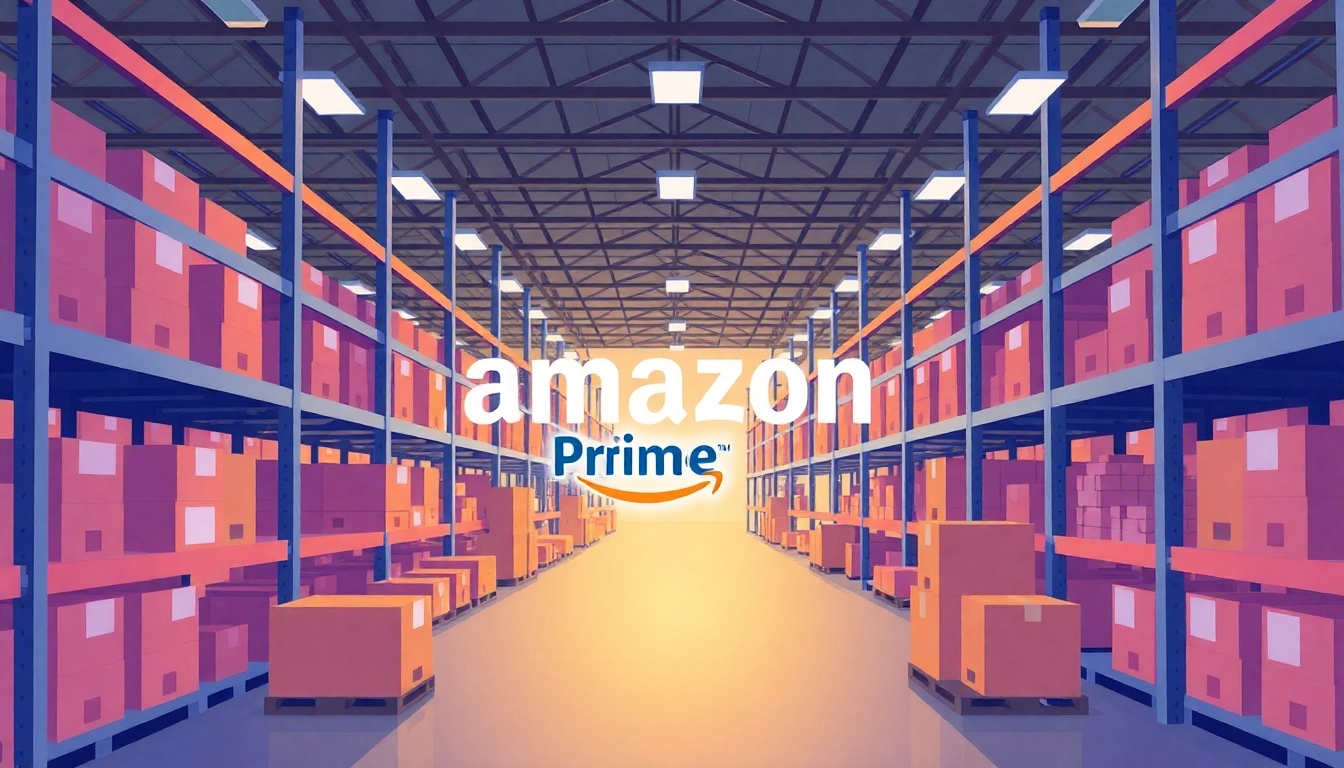
Maximizing Sales with Seller Fulfilled Prime: Benefits, Requirements, and Strategies
Understanding Seller Fulfilled Prime
What Is Seller Fulfilled Prime?
Seller Fulfilled Prime (SFP) is a unique and advantageous program developed by Amazon that allows third-party sellers to offer Prime shipping benefits directly from their own fulfillment centers. This means that sellers have the capacity to fulfill orders themselves, thereby gaining the prestigious Prime badge for their listings, which normally only comes with using Amazon’s Fulfillment by Amazon (FBA) service. The program is designed to enhance the flexibility for sellers, allowing them to manage their logistic operations while still providing customers with the fast shipping that comes with Prime membership. With seller fulfilled prime, businesses can showcase their dedication to customer satisfaction and increased sales opportunities by attracting more Prime members who prefer 1-day or 2-day shipping options.
Key Features of Seller Fulfilled Prime
- Prime Badging: Eligible sellers can have their products display the Prime badge, indicating fast shipping to customers.
- Fulfillment Control: Sellers manage their shipping processes, including choices related to shipping carriers and packaging.
- Service Flexibility: Sellers can adjust their shipping options based on their operational capabilities and customer needs.
- Performance Metrics Monitoring: Sellers are provided with tools to monitor their shipping performance, which helps maintain high standards needed for Amazon’s Prime service.
- Access to a Large Customer Base: By participating, sellers can market their products to Amazon’s extensive Prime customer base, ultimately improving visibility and potential sales.
Comparison with Fulfillment by Amazon (FBA)
When evaluating Seller Fulfilled Prime against Fulfillment by Amazon (FBA), the differences become apparent in operational logistics. FBA requires sellers to send their products to Amazon warehouses, where Amazon takes care of inventory storage, shipping, and customer service. While FBA provides ease and convenience, it also comes with storage fees and fulfillment fees that can add up over time, particularly for slow-moving items.
In contrast, Seller Fulfilled Prime enables sellers to retain full control over their fulfillment processes, which is particularly beneficial for small businesses that have the capability to manage their shipping. However, sellers shoulder the responsibility for logistics, including ensuring that all deliveries meet the strict Prime shipping timelines or risk losing their eligibility for the program.
Eligibility and Requirements
Criteria for Enrollment in Seller Fulfilled Prime
To enroll in the Seller Fulfilled Prime program, sellers must meet specific criteria to ensure they can maintain the level of service expected by Amazon and its customers. These criteria typically include:
- Outstanding historical fulfillment performance: Sellers must have an existing track record demonstrating reliability in fulfilling orders.
- Minimum total shipments: Sellers generally need to have self-fulfilled at least 100 packages in the last year.
- On-time delivery rates: Maintaining an on-time delivery rate of at least 93.5% is crucial.
- Valid tracking: An accuracy rate of validated tracking information above 95% is required to ensure transparency and reliability.
Trial and Pre-Qualification Steps
The process for engaging with Seller Fulfilled Prime includes a trial period. During this trial, sellers must demonstrate their fulfillment capabilities under the established criteria. Key steps generally include:
- Fulfill a minimum of 100 Prime-eligible orders within a month-long trial period.
- Maintain a cancellation rate lower than 2.5% during the trial period.
- Achieve the previously mentioned delivery metrics to ensure qualification.
Passing this trial allows sellers to fully enroll in the program and obtain the Prime badge for their eligible listings, thus immediately improving their visibility in the marketplace.
Understanding Performance Metrics
Performance metrics play a critical role in maintaining eligibility within the program. Amazon continuously monitors several key metrics that sellers must be aware of:
- On-Time Shipment Rate: Ensures packages are shipped on time, affecting customer satisfaction directly.
- Order Defect Rate: This is a composite metric that includes negative feedback, A-to-Z claims, and credit card chargebacks.
- Cancellation Rate: Indicates the percentage of orders canceled by the seller before shipment.
- Valid Tracking Rate: Measures the effectiveness of tracking numbers provided, which reassures customers about order status.
Maintaining excellent performance metrics not only aids in keeping the Prime badge but enhances the seller’s reputation on Amazon, thus driving more sales.
Benefits of Using Seller Fulfilled Prime
Increased Visibility and Sales Potential
One of the most prominent benefits of Seller Fulfilled Prime is increased visibility within the Amazon marketplace. With the Prime badge, products are more likely to appear in search results, and it is statistically proven that Prime products convert at a higher rate than non-Prime listings. Access to millions of Prime members also enables sellers to tap into a ready-made customer base looking specifically for fast-shipping options.
Control Over Fulfillment Process
Sellers utilizing Seller Fulfilled Prime have full control over their fulfillment operations; from inventory levels to shipping times, they can fine-tune every aspect to align with their business strategy. Unlike FBA, where sellers relinquish control to Amazon’s fulfillment network, this program allows for personalized handling of shipping procedures that could be tailored to specific customer needs or regional preferences.
Enhanced Customer Satisfaction
By managing the fulfillment process themselves, sellers can prioritize customer service steps to alleviate bottlenecks and delays. When issues arise, sellers can address them directly, ensuring minimal disruptions to the customer experience. The satisfaction derived from quick delivery—while also providing an engaging post-purchase experience—facilitates positive reviews and encourages repeat business.
Challenges and Considerations
Common Issues with Seller Fulfilled Prime
While the Seller Fulfilled Prime program offers significant advantages, it is not without its challenges. Some common issues sellers may face include:
- Maintaining consistent shipping times: Balancing efficiency while handling increased order volume can be difficult, especially during peak seasons.
- Managing logistics costs: Expedited shipping can result in higher operating costs, which need to be managed conscientiously to protect profit margins.
- Meeting performance metrics: Keeping up with Amazon’s demanding performance standards takes careful planning and execution.
Cost Implications for Sellers
Understanding costs associated with Seller Fulfilled Prime is crucial for profitability. Shipping costs, packaging materials, and potential hiring additional staff to meet order volume all factor into operational expenses. Sellers should conduct thorough analysis of their logistics strategy, ensuring that they can offer competitive shipping rates without eroding their profit margins.
Strategies to Overcome Fulfillment Challenges
To mitigate challenges associated with Seller Fulfilled Prime, sellers can adopt several strategies, such as:
- Investing in efficient logistics: Streamlining the supply chain and exploring multiple carriers can help reduce costs and improve shipping times.
- Utilizing technology: Employ order management systems to improve efficiency in handling and processing orders.
- Monitoring performance metrics closely: Regularly checking performance data allows sellers to identify trends or issues proactively.
Best Practices for Success
Optimizing Shipping and Delivery
For seller fulfillment to be a success, optimizing shipping and delivery is paramount. This includes selecting the right shipping carriers, considering local facilities for faster delivery, and maintaining effective inventory management systems. Sellers should invest in reliable shipping solutions that offer competitive rates while providing speed and reliability. Generating a solid relationship with carriers can also yield benefits through negotiated pricing and service improvements.
Leveraging Seller Fulfilled Prime for Marketing
Marketing strategies that highlight the availability of Prime shipping can be a game-changer for driving sales. Sellers can promote their products through sponsored ads, social media strategies, and email marketing campaigns that emphasize the fast delivery options available via Seller Fulfilled Prime. Highlighting customer reviews that mention quick service can also bolster credibility and entice customers to choose their offerings.
Tracking Performance and Adjusting Strategies
Lastly, maintaining a robust tracking system for performance metrics while being nimble enough to adjust strategies accordingly is key for long-term success in the Seller Fulfilled Prime program. Regularly review analytics to understand customer behaviors and preferences, allowing for adaptable strategies that will meet the evolving demands of customers effectively.
